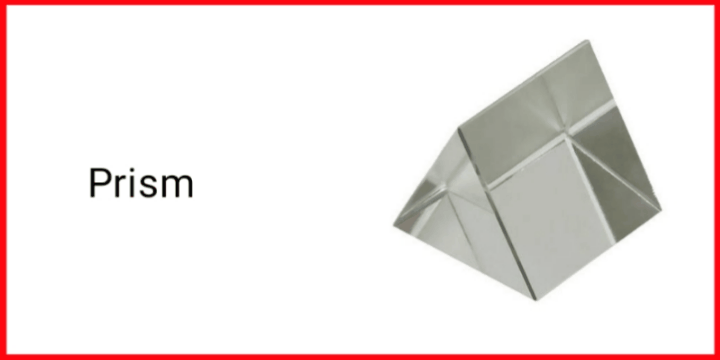Hello friends in this article we learn resolving power of prism, viva question and diagram, procedure, to determine the resolving power of a prism experiment. Resolving Power of prism and grating and dispersion and resolving power of the prism.
Aim :
To determine the resolving power of the given glass prism.
Apparatus :
Glass prism, spectrometer, mercury source, spirit level, magnifying glass, adjustable slit, travelling microscope, stand.
Formula :
Diagram :
Procedure :
- Level the base of the spectrometer and prism table using a spirit level.
- Adjust the collimator and telescope for parallel rays by Schuster’s method.
- Illuminate the slit of the collimator with mercury light. Obtain the line spectrum of mercury light through the telescope.
- Measure the angle of minimum deviation (𝛿𝑚) for the lines (yellow-1, yellow-2, green and blue) of mercury spectrum.
- Calculate µ for all the lines using the given formula.
- Now, obtain the spectrum of mercury light and get the yellow-1 line of the spectrum in the minimum deviation position once again and put the point of intersection of the cross wires at the midpoint between the two yellow lines of the spectrum.
- Mount the adjustable vertical slit in front of the objective of the telescope.
- To get the proper value of slit width “a” for the just resolution, take two readings.
(i) a1: for the two lines seen just separated(ii) a2: for the two lines seen just merged.
microscope or with the help of adjustable slit.
- Calculate the width ‘W’ of the base of the prism using the formula.
- Calculate the resolving power of the effective prism using the formula.
- Calculate Resolving Power of the effective prism.
Observation :
Viva Question and Answers [FAQ] :
1. What is a prism?
Ans : It is a transparent object in the triangular form with refracting surfaces that separates white light into a spectrum of colours.
2. What is the angle of deviation?
Ans : The change in the direction of light is called the angle of deviation.
3. What is the angle of minimum deviation?
Ans : The angle of deviation is minimum at a particular incidence. Which is called as the angle of minimum deviation.
4. Will the angle of minimum deviation change, if the prism is immersed in water?
Ans : Yes, the refractive index of glass in water is less than the refractive index of glass in air hence of minimum deviation decreases.
5. Does the angle of minimum deviation vary with the colour of light?
Ans : Yes, it is minimum for red and maximum for violet.
6. What is dispersion?
Ans : The angle of different colour have different wavelength. Hence the refractive index of a material is different for different colour of light. Therefore, dispersion happens.
7. What is Angular Dispersion?
Ans : The angle between the emergent rays of any two colours is called ‘angular dispersion’.
8. What is dispersive power?
Ans : The dispersive power is defined as the ratio of angular dispersion to the mean deviation.
9. Which Light source should be used to calculate Cauchy’s constant and dispersive power of prism?


